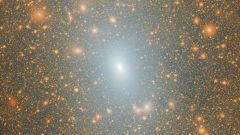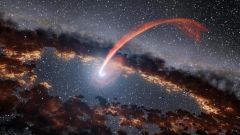Science News

Jul 14th, 2025 - Extinct. That word used to carry a sense of finality with it. If a species went extinct, that was the end of it. There was no bringing it back; it was gone forever. That is how it has always been, until recently. Lately, scientists have been ... [Read More]
Source: wideopenspaces.com

Jul 14th, 2025 - Meteorite NWA 16788 traveled roughly 140 million miles to get here, crash-landing in the Sahara Desert. One lucky bidder will soon fork over millions of dollars to take home NWA 16788, a 54-pound (24-kilogram) Martian meteorite. This space rock, ... [Read More]
Source: gizmodo.com

Jul 14th, 2025 - Physicists have used quantum networking technology to probe the relationship between Einstein's General Theory of Relativity and quantum mechanics. Quantum internet research is an offshoot of quantum computing engineering. Quantum networks would ... [Read More]
Source: cosmosmagazine.com

Jul 14th, 2025 - For decades, reptiles – including tortoises – have lingered in the background of animal sentience discussions. Popular imagination often casts them as simple, instinct-driven beings – unfeeling and unaware. Unlike mammals and ... [Read More]
Source: earth.com

Jul 14th, 2025 - The Milky Way may be surrounded by dozens of yet-to-be-detected satellite galaxies, scientists claim. Using the highest-resolution simulation of our galaxy's dark matter — an invisible entity that shapes the large-scale structure of the universe — and new mathematical models, cosmologists predict that more than 100 additional satellite galaxies beyond the ones already cataloged may be swirling around our own. If those galaxies are spotted by telescopes, they could offer support for the standard model of cosmology — the dominant model of our universe that explains how ... [Read More]
Source: livescience.com

Jul 14th, 2025 - Sharks have survived five mass extinctions and ruled the oceans for over 400 million years. As apex predators, they play a critical role in maintaining the balance of marine ecosystems. But today, sharks are more threatened than ever. On Shark ... [Read More]
Source: earth.com
This New Bioplastic Is Clear Flexible and Stronger Than Oil-Based Plastic. And It's Made by Microbes

Jul 14th, 2025 - New material mimics plastic's versatility but biodegrades like a leaf. Scientists at the University of Houston may have taken a big step toward solving one of the world's most pressing environmental problems. They've engineered sheets of bacterial ... [Read More]
Source: zmescience.com

Jul 14th, 2025 - Ice is a key component in the universe. There are frozen water molecules on comets , moons, exoplanets , and in your drink as you cool off from the summer heat. However, under the microscope, not all ice is the same, even though it is made of the ... [Read More]
Source: wired.com

Jul 14th, 2025 - You can now listen to Fox News articles! Archaeologists recently uncovered multistory buildings from a lost Egyptian city in the Nile Delta, fostering new insights into urban life in antiquity. The ruins of the city – known in ancient times ... [Read More]
Source: foxnews.com

Jul 13th, 2025 - The probe captured images and other data from within the sun's corona during a record-breaking approach last year. NASA's Parker Solar Probe made history with the closest-ever approach to the sun last December , and we're finally getting a look at some of the images it captured. The space agency released a timelapse of observations made using Parker's Wide-Field Imager for Solar Probe (WISPR) while it passed through the sun's corona (the outer atmosphere) on December 25, 2024, revealing up close how solar wind acts soon after it's released. The probe captured these images at just 3.8 million ... [Read More]
Source: engadget.com

Jul 13th, 2025 - About 400 million years ago, some intrepid fish became the first vertebrate animals to walk on land. Now a fossil jawbone found in northern Australia might help explain what these pioneering fish ate. Lobe-finned fish such as coelacanths are ... [Read More]
Source: cosmosmagazine.com

Jul 13th, 2025 - 'Junk' RNA molecules help to regrow damaged nerves Once dismissed as "junk," a group of RNA molecules has been found to help regrow damaged nerves in mice in new research. The discovery could unlock new ways to treat nerve injuries and even restore ... [Read More]
Source: newatlas.com

Jul 13th, 2025 - QUICK FACTS What it is: The open star clusters NGC 460 and NGC 456 Where it is: 200,000 light-years away, in the Small Magellanic Cloud dwarf galaxy When it was shared: July 7, 2025 NASA 's Hubble Space Telescope and James Webb Space Telescope ... [Read More]
Source: livescience.com

Jul 12th, 2025 - When it comes to the full astronomical day - a single rotation of planet Earth in which the hour hand moves twice around a standard clock - some of this year's shortest are happening in July and Aug. This week has seen the shortest days of the year ... [Read More]
Source: timesofindia.indiatimes.com

Jul 12th, 2025 - A dead Mars may have been inevitable – and the Sun is to blame New discoveries by NASA's Curiosity Mars rover may not only explain why the Red Planet is a dry, lifeless desert, but that it may have been on an inevitable path to being a dead world despite being so similar to Earth. And the Sun is to blame. Though Mars may seem like a very alien world, it is still the most Earth-like planet known. Its size, composition, and distance from the Sun are remarkably similar to Earth, but over the past two billion years it went down a very different path. Where the Earth has a dense atmosphere, ... [Read More]
Source: newatlas.com

Jul 12th, 2025 - By A joint team of archaeologists, chronologists, geologists, and paleontologists have successfully dated a hoard of wooden tools recovered nearly a decade ago, Ancient Origins reported. The ancient tools were originally found in two separate excavations at an archaeological site in Gantangqing, southwestern China, between 2015–2016 and 2018–2019. They were found nestled with a variety of plant and animal fossils as well as stone artifacts in low-oxygen, clay-heavy sediment, which kept the wood intact over thousands of years. New dating has shown the tools to be around 300,000 ... [Read More]
Source: miamiherald.com

Jul 12th, 2025 - They're the boogeymen of science fiction, a paradox of science and quite possibly a key to understanding the universe. Scientists have been scrambling to understand the mysterious forces of black holes for decades, but so far it seems they've found more existential questions than answers. We know a black hole is so heavy that its gravity creates a kind of divot in the geometry of the universe, said Priyamvada Natarajan, a theoretical astrophysicist at Yale University. "A black hole is so concentrated that it causes a little deep puncture in space/time. At the end of the puncture you have a ... [Read More]
Source: aol.com

Jul 12th, 2025 - Ticks and the diseases they carry are only becoming more common. But new treatments and vaccines might not be too far off. Summer in the U.S. is now in full swing. That means plenty of outdoor fun, Sun, and, unfortunately, for many of us, tiny eight-legged ticks to avoid. Ticks and the many illnesses they carry, like Lyme disease, are a growing public health threat. Just this week, for instance, the latest data from the Centers for Disease Control and Prevention showed that 2025 so far has seen the highest number of tick-related emergency room visits recorded since 2019. And though the worst ... [Read More]
Source: gizmodo.com

Jul 12th, 2025 - Western Xia imperial burial site recognised for history of cultural fusion is China's 60th landmark to earn UN cultural agency designation Reading Time: 4 minutes The Western Xia Imperial Tomb complex in northwest China has been designated as a Unesco World Heritage site – a recognition of the site's importance as a centre of cultural fusion and commercial activity on the ancient Silk Road . The group of burial sites , also known as the Xixia Imperial Tombs, officially received the designation from the United Nations cultural body on Friday, according to Chinese state news agency ... [Read More]
Source: scmp.com

Jul 11th, 2025 - For decades, Pluto remained one of the most mysterious objects in our solar system, until July 14, 2015, when NASA's New Horizons spacecraft became the first mission to visit it up close, capturing breathtaking images of the distant world. It took over nine years for New Horizons to reach Pluto after blasting off atop an Atlas 5 rocket on Jan. 19, 2006. After traveling billions of miles through the solar system, New Horizons sent home stunning images of Pluto and its moons, making headlines around the world. It took more than 15 months for the spacecraft to send all of the 6.25 gigabytes of ... [Read More]
Source: upi.com